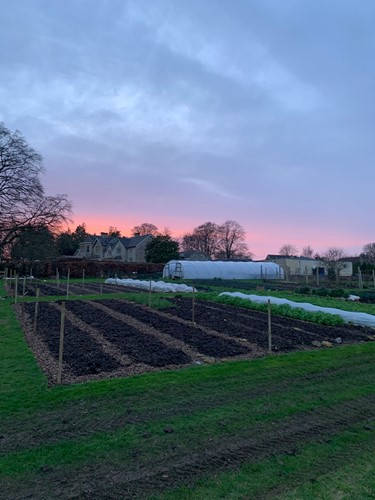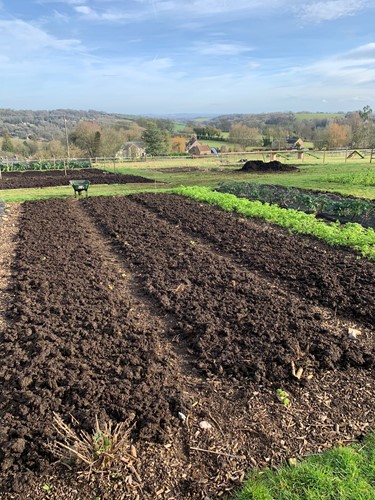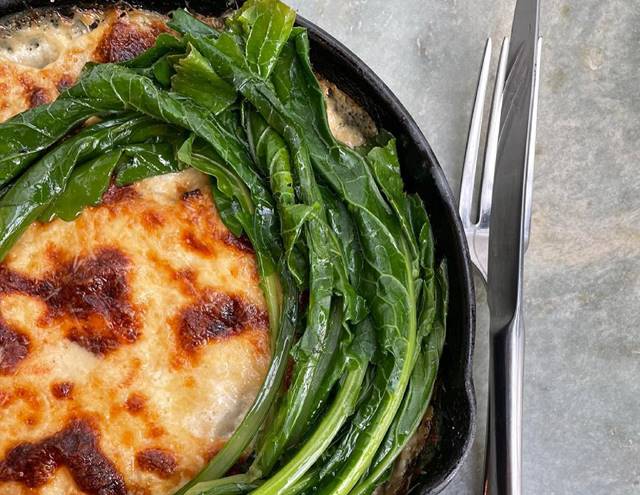The last couple of months have been all about meticulous preparation and setting the stage for the upcoming spring in the kitchen garden. Scrubbing clean storage areas and polytunnel, establishing new no-dig beds, constructing new compost bays and reinforcing fences.
Anticipating vigorous growth, I've also set up support wires for the plants that need it as I know I will have no spare time to do so in summer. It would be fair to say I’m ready and eager to get going once again.
For many, February 14th signifies Valentine's Day, but for us growers, it marks a pivotal moment: the long-awaited commencement of sowing season. Creating a warm propagation space is crucial, and while germination can occur in darkness, seedlings require a protected environment with natural light. Timing is everything; planting just before spring ensures that plants thrive when sunshine and daylight hours abound. The middle of February is the sweet spot for sowing, with ample time remaining for the season ahead.

Of course not all seeds should be sown at this time, they do need to be tolerant of chilly weather. In my current seedling lineup, spinach, onions, lettuce, broccoli, cauliflower, spring cabbage, radish, fennel, beetroot and kohlrabi are all in progress. While traditionally I would postpone sowing peppers and tomatoes until March, this year, fuelled by an eagerness to extend the growing season, I've invested in an indoor growing setup complete with heat mats and grow lights. This strategic move aims to accelerate the harvest, learning from the previous year when sweet peppers turned red in mid-August and tomatoes ripened in early July.

While Somerset has experienced generally mild weather, the daylight hours have only recently become sufficient to spur growth. Snowdrops and wild garlic grace our hedgerows, but our overwintered spinach, cabbage, and spring onions are only just starting to break their winter dormancy.
Amidst the more rugged and windswept landscape of the lower section of the kitchen garden, a bed established last year houses over 50 thriving sprouting broccoli plants including two varieties of purple sprouting and, new to me, a white sprouting type. They were planted in late June in manure delivered from a nearby farm. It was a bit too fresh at the time and I struggled growing potatoes in it over spring but now some time has passed and the microbes in the soil have multiplied and started breaking down the manure into nutrients our sprouting broccoli can flourish on.

Flexibility is key in our garden; each year, I adjust the allocation of space based on the demands of our chefs. It can be hard to judge but I have very rarely had too much one thing. A new raised bed welcomes Jerusalem artichokes, another venture into uncharted territory, while a freshly minted no-dig bed will grow twice the amount of new potatoes we had last year followed by even more Brussel sprouts.
In defiance of conventional wisdom I don’t follow a strict crop rotation system that you are traditionally taught you must do, or else your crop will succumb to disease. Prioritising healthy soil without the need for annual digging is key I believe. However, I do try to move potatoes around due to the fact that there is a lot of soil disturbance when harvesting which I would like to minimise.

Maintaining a tidy garden is a labor of love, but one made easier by the absence of rampant growth. Weeds are diligently removed, allowing the inherent beauty of the kitchen garden to shine through. Though most beds are devoid of crops, our beds are far from barren, teeming with life beneath layers of compost mulch.
As the days lengthen and the earth awakens, our kitchen garden stands as a testament to the cycles of nature, each task performed with an eye toward the bountiful harvests that lie ahead. Ready, set, sow-spring beckons, and we eagerly embrace its call.
My new recipe is up - GRILLED PURPLE SPROUTING BROCCOLI, ROAST GARLIC AND PECORINO EMULSION WITH HERBS AND WALNUTS
Until next time…
Darren Stephens
Chef-Gardener, Homewood









